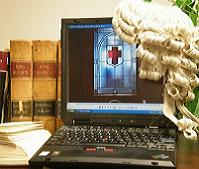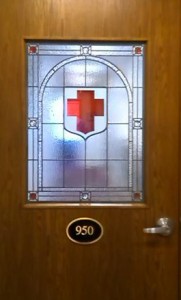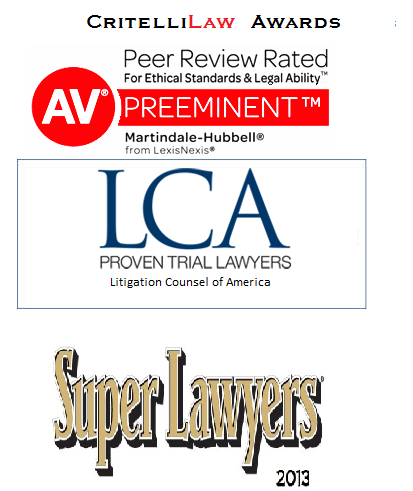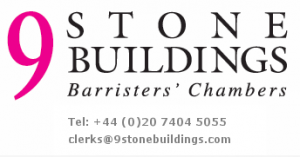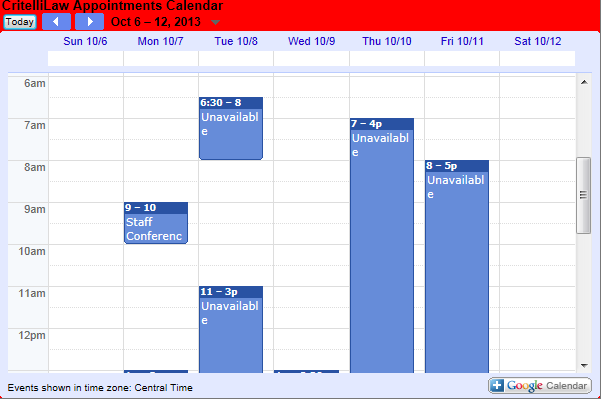ISBA: Roadmap to Excellence
May 28th, 2004 | By critellilaw | Category: Public Service
As the 118th President of the Iowa State Bar Association, I want to welcome you to the 2004 – 2005 ISBA year. Last year President Collins lead us through a reorganization and gave us a streamlined organization. I liken it to an airplane. He re-built it, replaced the prop with a jet, and and taxied it on to the runway. Now it’s up to us to take it off. So fasten your seat belt.
The ISBA year revolves around six operations. I refer to them as 1) The Presidential Initiative, 2) Bar Operations; 3) the Legislative Program; 4) Bar Products, 5) the Business of the Bar and 6) Future Studies. The Presidential Initiative is the subject of this paper. However to give you a better appreciation for Bar activities, allow me to generally describe the other five operations.
Bar Operations concerns the activities and programs of the 21 Sections, 45 Committees and Commissions of the Bar and interfacing with 99 County and District Bar Associations. This includes public relations, member services, seminars, committee operations, judicial matters, and all the activities that you expect from an active bar association.
The Legislative Program involves our formal agenda as well as special projects assigned to the Bar by the Legislature. This year we were assigned four special projects: a review of Iowa’s criminal laws, sentencing laws, a review of litigation and medical malpractice insurance review.
Bar Products concerns those things we sell: CLE, manuals, IowaDOCS, etc. To serve our members, and keep the income flowing we must keep our products relevant, affordable and available.
The Business of the Bar concerns Bar office finances and administration.
Future Studies allows us to anticipate the future and formulate strategies to react to it. For example, we can anticipate that there will be a legal malpractice insurance crisis within the next four years. Are there actions we can take now to avoid or minimize the crisis? We are presently conducting six feasibility studies and considering nine possible projects.
Against that background, let’s turn our attention to the Presidential Initiatives for 2004-2005.
The Bar serves three main constituencies: Members, the Public and the Court. We must be attentive to the needs of all three and develop programs and adopt policies that addresses of each constituency. Our 2004-2005 Program is designed to facilitate that commitment through three main initiatives. I call the program promoveo.. to improve.
THE MEMBERS
Serve our Members by improving the Bottom Line.
Firstly, we are going to improve the member’s bottom line. Our strategy will be to attack the economic enemy on three fronts: by creating an awareness of the actual cost of producing the legal product; by adopting measures to lower fixed overheads and by enhancing our marketability.
a) increase fees
We will accomplish our first strategy by the tactically educating our members regarding the functional equivalents between salaries and normal hourly charge rates. In other words, how much should you charge per hour to attain the functional equivalent of a particular salaried position. You will be surprised at the results. We will then offer suggestions in the form of alternate methods of billing complete with “off-the-shelf” client brochures and engagement agreements explaining the nature of the legal service involved and the cost of producing the legal product. Clients have no problem understanding the economics of consultants in other disciplines. We must educate them (and ourselves) as to the economics of the legal product.
b) lower over-heads
Standardization: We will attack the age old demon of fixed over-heads through the triple tactic of standardization, combined buying force and out-sourcing. In the practice of law time is money. The more time we spend re-creating the wheel the less money we earn. Unfortunately lawyers are notorious at reinventing, re-engineering and then re-building the wheel. I suspect this is the result of lack of corroboration between lawyers and law firms. There seems to be very little intra-lawfirm dialogue regarding standardization. Consequently, it falls to the Bar to analyze the repetitive aspects of the practice of law which are common to us all….and then standardize them.
Combined Purchasing Cooperatives: Individual law firms are purchasers and usually purchase at the highest rate. We will search for ways to combine our buying power so we can enter the marketplace from a position of strength . The legal product is composed of many legal service components.
Outsourcing: In some situations the cost of providing a particular service component may overwhelm the over-all cost of the product. We will attempt to identify the conditions which may give rise to those situations and fashion an outsourced remedy.
c) increase marketability
The last strategy to improve the bottom line will involve increased marketability for our services. Tactically we will accomplish this task by first identifying our market, our competitors in the market, and why the market is attracted to the competitors product. Then we must fashion an approach to educate the market regarding the added value of our legal product versus the competitor’s product. This initiative starts at home. I challenge all Sections to identify the non-lawyer competitors in their respective areas and to tell us why our legal product is better. Until that can be done we cannot begin to compete in the marketplace.
Unfortunately I recognize that before we can compete we must be favorably accepted by the marketplace. As will be described later in our initiative regarding our pubic image, there are things that we can do to change the public’s perception of the profession.
THE PUBLIC
Serve the Public by improving public awareness of the importance of law and lawyers.
Our second initiative will be to improve public awareness of the importance of law and lawyers. This is extremely important because a low public image will prevent people from utilizing legal services which almost always works to their detriment. To improve our public acceptance we must be seen as both a giver and a player in the marketplace. Our strategy will be to become both a teacher and a doer.
a) Peoples Law School
Some would argue that our competitors have poisoned our reputation in the marketplace. I disagree. I believe, and studies show, that the market thirsts for knowledge of the law and because we have not given them drink they have been force to find inadequate substitutes. We will attack this problem by turning on the spigot of knowledge.
We refer to our college or school as our alma mater. Alma mater in Latin means nourishing mother. It is from this “nourishing mother” that we received the most precious of gifts…knowledge. One can hardly contemplate a more positive image. It is undisputed that the public wants legal knowledge. We must fill their need for knowledge; the Bar must become the public’s alma mater regarding knowledge of the law. I propose that we create a Peoples Law School.
To fully participate in a democracy, the citizenry must have a basic knowledge of everyday law. The PLS will offer knowledge in five basic legal areas: Contracts, Real Estate, Taxation, Torts and Criminal Law. Instruction will be by an initial 2 hour seminar focusing on a “how to..” aspect of the core area, e.g “How to buy and sell a house; How to write a basic contract, etc.”. Those who wish to proceed further, will be given a password which will be their key to the ISBA-PLS virtual school where they will take further on-line course work and examination. . After completing examinations in all five core legal areas the student can attend a graduation ceremony at the Iowa State Fair where they will be presented with a Diploma in Law from the ISBA-PLS. As alumni, they may be asked to assist at future PLS sessions.
I ask each Section to participate by creating the course work. Further, I will ask each County/District Bar Association to work with us in hosting the initial seminars. The Public Relations committee will handle the marketing and advertising.
b) Citizens Law Bureau:
It’s midnight and you have a medical question. Simply call the Mercy Nurse. This is public service at its best. But where do you turn with a legal question? We too must provide some sort of initial legal information to those with specific legal questions. There is difference between sharing knowledge and issuing legal advice and opinion. The ISBA Volunteer Lawyer’s Project is turning its attention to this unserved area of public service.
c) Volunteerism.
Comedians and jokester do not create the subject of their folly, they simply react to that which exists. The public is sending us a message with their unseemly lawyer jokes…and we are not listening. Examine the central theme for most lawyer jokes: greed, self dealing, duplicity, complexity, etc. The message is strong and direct. Greed disguised as zeal, ambition masquerading as aggression are no longer acceptable professional attributes. We must change our behavior.
Tactically we must first self-examine the reason that brought us to the Bar. We must re-awaken that feeling of self worth we experienced the moment we were called to the Bar. We must then go into the community, volunteer and contribute to the greater good. Lawyers have two roles, advocate in contentious matters and pro consul in administrative matters. We must re-focus our image to pro consul for community volunteer committees, boards and commissions so the public can experience the value we add to society. To prove the point, simply ask any voluntary board or committee sans a lawyer member. When extensive community volunteerism is coupled with our public legal education initiative we should begin to experience a change the public’s perception of our profession.
However, if we are going to send forth our members they must be well trained in regarding not for profit boards, commissions and committees. We will call upon the CLE Division to create training seminars designed to give our members basic education in the broad spectrum of the law that we can anticipate will affect their efforts along with a “tool-box” of forms and memoranda that they can use.
Recognizing that we are asking lawyers to give precious time for the good of the Bar, there must be a quid pro quo. I am asking that we revise our present CLE requirements to recognize service to the community along with other more tangible benefits such as dues reduction. I request that every lawyer who serves the public in any such capacity notify the Bar so that we can post the lawyer’s name and the organization they serve on our website.
THE COURTS
Serve the Courts by improving technology and Legal Training.
Judicial salaries and independence of the judiciary are standing projects of the Bar. But we can do more.
a) District Court database.
Each day our judges produce tax-payer paid work product that its unnoticed and practically inaccessible except to the parties involved. Wounded by severe budget cuts, there is no central depository for judicial opinion, ruling or jury instructions. The time has come for the Bar to step up to the plate and leverage its technology to provide the service. I have asked the Member Service Division, Technology Committee to work with Bar HQ and the Iowa Judges Association to assemble a database of state court judicial decisions, rulings and jury instructions indexed by case type, judge as well as the usual legal database tags. The service would be available to all members without charge.
b) Improved legal training.
How to improved lawyer training help the courts? Ask any judge! Lawyers who are well trained are not only more efficient and thorough, but they assist the Court by defining the disputed issues with precision. Law practice is a symbiotic blend of art and education. Education can be taught, but art must be trained. We are the only legal profession in the common law world that does not require a period of mandatory training prior to allowing a lawyer to enter into full practice. For the new lawyer, we propose to change this situation by the a Bar sponsored –but mandatory– post bar examination pre-admission training course. Under today’s bar examination scheme, the examinee must wait two months before receiving the examination results and being admitted to the Bar. This down time provides us with a valuable opportunity to conduct the mandatory training orientation in several venues through the state.
Each year an increasing percentage of court time is devoted to Family and Criminal law cases. We are asking our Family and Juvenile Law and Criminal Law Sections to create week long speciality institutes where these specialities can be taught and lawyers trained. Better trained and prepared lawyers will greatly assist the Courts in processing these cases.
Ready, Set….
Our flight plan has been filed, we’re on the tarmac and we’ve been cleared for takeoff. In the words of Frank Sinitra’s 50s hit….. Come fly with me!
Nick Critelli
June 2004
